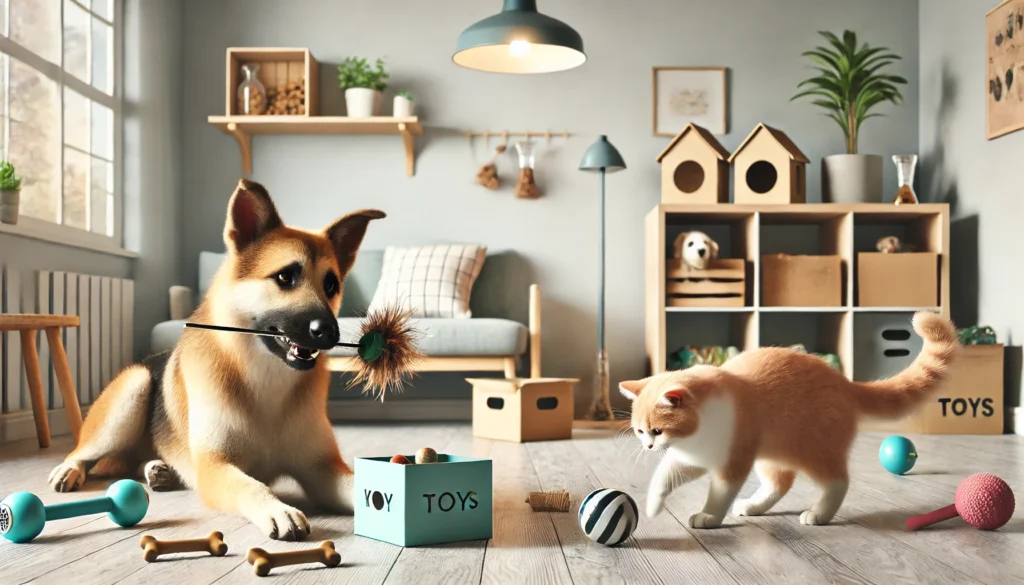Just like humans, pets benefit from variety and novelty. New toys and activities stimulate their minds, reduce boredom, and improve emotional well-being — especially for indoor pets who don’t experience as much change in their environment.
Here’s how to introduce new toys and enrichment activities the right way to keep your dog or cat engaged, curious, and happy.
Understand Your Pet’s Play Style
Every pet is different, so it helps to know what they naturally enjoy.
- Dogs may prefer tugging, chewing, chasing, or sniffing-based games.
- Cats may enjoy pouncing, stalking, climbing, or batting with paws.
Match enrichment to your pet’s natural instincts for better results.
Start With One New Item at a Time
Introducing too many toys at once can overwhelm or confuse your pet.
- Offer a single new toy or activity and allow them to explore at their own pace.
- Use treats or familiar scents to encourage interaction.
- Rotate old toys out and new ones in to keep things fresh.
Observation is key — take note of what excites them most.
Use Positive Reinforcement
Make the new item or activity feel rewarding from the start.
- Praise your pet when they interact with a new toy.
- Use treats when they explore or play.
- Avoid forcing them to use a toy — let curiosity lead the way.
Positive associations encourage repeated engagement.
Create “Toy Time” Rituals
Routine helps pets anticipate and enjoy new experiences.
- Dedicate 10–15 minutes a day to toy exploration or enrichment play.
- Make this a calm, positive moment without distractions.
- Use it as bonding time while helping your pet focus and stay stimulated.
Consistency increases your pet’s comfort with trying new things.
Try Different Categories of Toys
Mix it up with different types of stimulation.
- For dogs: chew toys, plush toys, treat puzzles, ropes, balls, or scent mats.
- For cats: feather wands, tunnels, scratchers, puzzle trays, or catnip toys.
Diversity prevents boredom and keeps their interest high.
Incorporate DIY Enrichment
You don’t need to spend a fortune — simple DIY solutions work great.
- Use cardboard boxes, toilet paper rolls, or paper bags for hidden treats.
- Create “sniff trails” with small kibble or treats.
- Freeze food inside silicone molds or Kongs for long-lasting fun.
Handmade enrichment adds novelty and challenge.
Monitor for Overstimulation or Disinterest
Pay attention to your pet’s reactions.
- If they walk away or ignore the toy, take it away and reintroduce later.
- If they get too hyper or frustrated, take a break.
- Switch between calm and active toys to balance energy.
Every pet has their own limits — respect their pace.
Make Playtime Interactive
Toys are great, but interaction makes them better.
- Engage with your pet during play — toss, tug, or guide the toy.
- Let cats “catch” the toy during chase games to avoid frustration.
- Build a stronger bond through shared enrichment experiences.
You become part of the reward system when you play together.
Keeping toys and activities fresh helps prevent behavior problems, supports emotional balance, and creates a more joyful life indoors. With a thoughtful introduction and variety of enrichment, your pet will be excited to explore their space every day.






